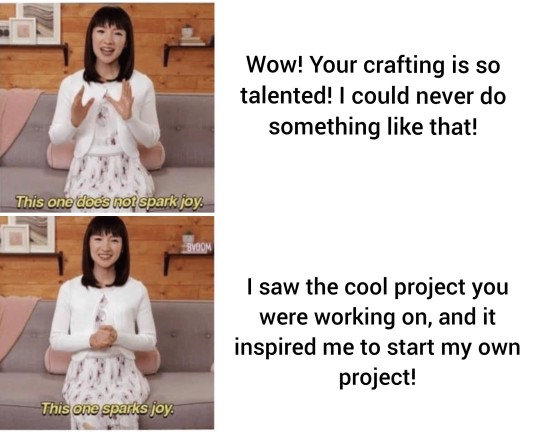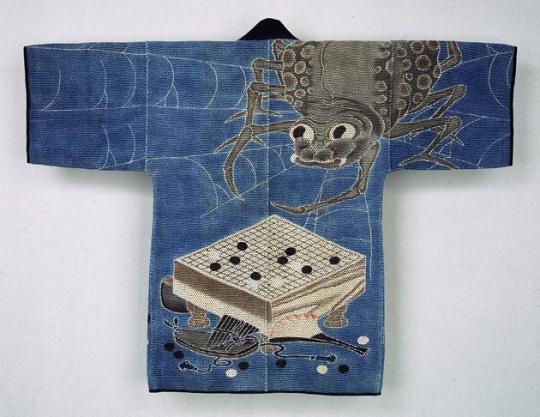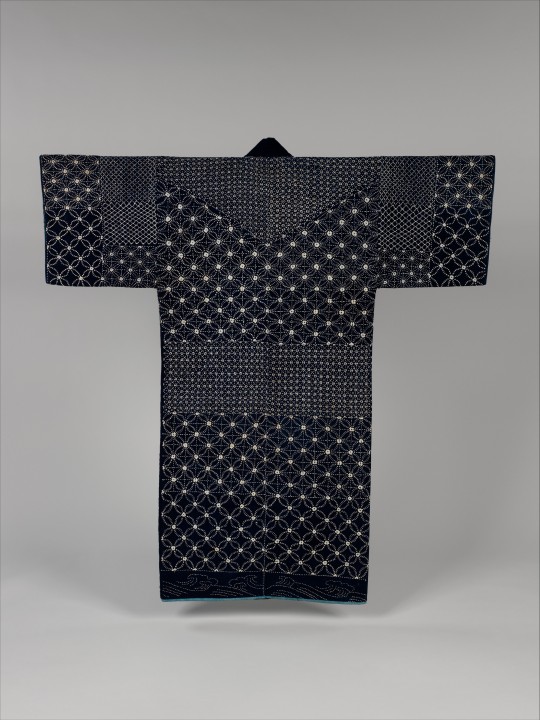#sashiko
Explore tagged Tumblr posts
Text

#crafts#crafting#mending#diy#sewing#embroidery#sashiko#visible mending#coworkers misunderstand and try to chastise me for being too humble when i argue with them for saying the top thing#so i made a meme about it#inspiration#?
30K notes
·
View notes
Text

Thick thighs may save lives but they're hell on your wardrobe.
Anyway, please to be appreciating this patch I sewed. Pic of me wearing the jeans tomorrow.
EDIT: This post took off more than I expected. For anyone who likes the colors, I used a combination of these two threads.
Olympus Sashiko Thread, 111 yd - 301 Rainbow
Yokota Sashiko Thread, 40 m - Brown Gold
I wish everyone the best of luck with their projects! :)
389 notes
·
View notes
Text
Diy doesn't have to be Make A New Jacket From Scratch btw, it can be turning Jacket You Don't Wear into Jacket You DO Wear by adding a simple patch, adding a cool charm to your zipper, or dying it a new color! :) diy is about doing whatever you can do, with what you have, however you feel comfortable.
Don't psyche yourself out of a good thing! It takes time and practice but you can Get There!! what the practiced diy-ers with all the coolest projects don't tell you is they were beginners too once upon a time!
#they actually do say this just not enough lol#solarpunk#diy or die#ecopunk#diy patches#sewing#visible mending#diy goth#diy projects#diy punk#punk diy#diy clothes#clothing alterations#sashiko
1K notes
·
View notes
Text

Japanese hikeshibanten jacket depicting spider and go board, 19th Century, Seattle Art Museum
4K notes
·
View notes
Text
sashiko
965 notes
·
View notes
Text






Great example of everyday noragi (work clothes, worn by farmers for ex.) from Taisho period. Note the makisode sleeve shape, offering freedom of mouvement!
You can see the close-up of the weave, made from asa (bast-fiber like hemp or linen) and kamiyori (twisted paper thread). Despite its "rugged" materials, weave is delicately interlocked with regular black stripes.
The coat also presents geometrical sashiko (white quilting), both reinforcing easily worn areas (collar, hems, inner center back), and decorating the garment.
PSA for writers: please please please don't put characters doing manual labour in "silk" kimono. I'll be forever grateful ;)
#japan#fashion#kimono#fashion history#noragi#work clothes#farmers#asa#hemp#linen#kamiyori#paper thread#sashiko#Japanese quilting#taisho period#着物
1K notes
·
View notes
Text





I love how sashiko patterns grow.
Before, I’ve patched on the inside, but with jeans I’ve found that they can become a little too tight after multiple patches. Besides, I really like how the fraying edge of the patch adds to the effect.
949 notes
·
View notes
Text






visible mending by me
@bridgetcl on ig
#fiber arts#textile#textile art#textiles#denim#mending#visible mending#embroidery#hand weaving#woven#plaid#sashiko#jeans#denim jeans#aviator
100 notes
·
View notes
Text
#sashiko#sashiko stitch#visible mending#embroidery#geri_in_stitches#tiktok#tiktok backup#saving these to another platform because i want to be able to access them after jan 19 2025 because the us gov said a thing
598 notes
·
View notes
Text
Visible mending is a satisfying, attractive pursuit that makes for interesting garments, IMO. This podcast is a brief primer on mending techniques and traditions. Excellent listen for anyone wanting to dip their toe in the practice.
32 notes
·
View notes
Text

i may have finally found a good way to mend my trousers
178 notes
·
View notes
Text
One time, I got my husband to print little embroidery floss holders for me and this is the result.
Huge improvement over just shoving the skein into a compartment and letting later me deal with it


10 notes
·
View notes
Text
Jacket mends over the last 4 years. Lots of sashiko, reinforcement of the yoke and sleeves, mending holes and tears, and all buttonholes were reworked. My plan this year is to remove the pokeball patch and do a more figural embroidery design with sashiko elements. Then doing a full lining of the back with some cool fabric I recently got.
I enjoy having longer term projects and I especially enjoy ones that I can wear.








959 notes
·
View notes
Text






My all purpose, all terrain utility bag, purchased from a creator on TikTok (rip) has already begun to unravel. Which is really unfortunate, it was advertised as a shopping bag, so I did expect it to be more hardy, but it was sewn together with minimal, thin thread for whatever reason. So I mended it with some Sashiko peel and stick patterns from another creator I found on TikTok (rip), Socorro Society. I chose a nice, heavy, radiant red thread, and I'm happy with the result! It feels much more secure. I do think that, in the near future, I will have to reinforce literally all of the seams on this bag, but I guess I'll let fate tell me when it's time to do that lol.
228 notes
·
View notes
Text


Sashiko Jacket
1850-1899 (Meiji Era)
Japan
Sashiko is a quilting technique that uses a running stitch to reinforce and prolong the life of a textile or to join together recycled pieces of cloth into a new garment. Japanese farmers used the technique to create warmer and more durable fabrics, and decorative sashiko stitching developed from this practical function. This robe’s embroidered design is dominated by three variations on the pattern of interlocking circles, called shippō-tsunagi. The bottom band features a design of waves.
The MET (Accession Number: 67.172.1)
#sashiko#fashion history#historical fashion#japanese fashion#non western fashion#japanese art#19th century#meiji era#quilting#japan#blue#off white#cotton#robe#jacket#1850s#1860s#1870s#1880s#1890s#the met
2K notes
·
View notes